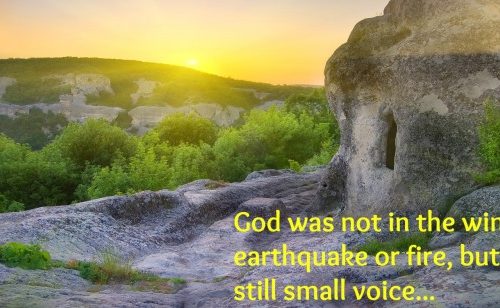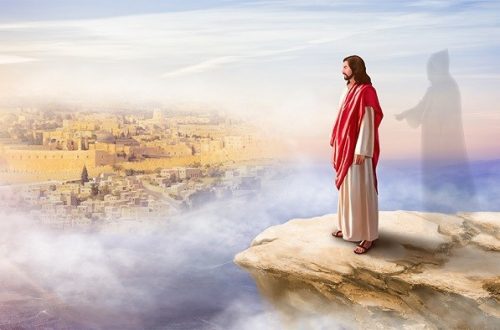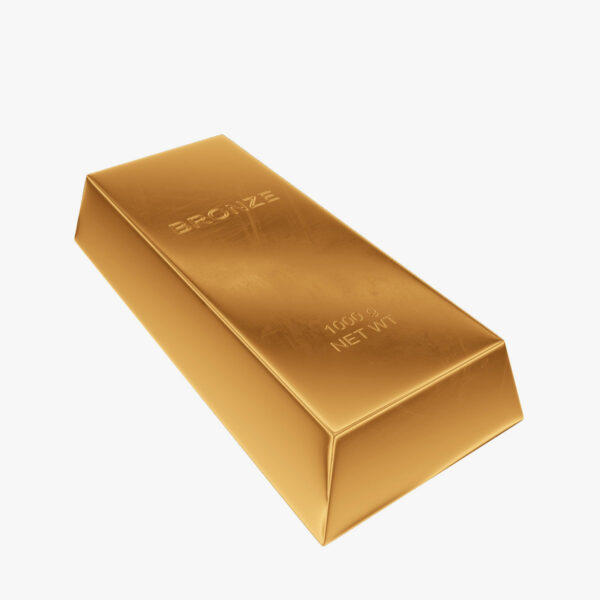
Bronze
The Middle Bronze Age (2000–1500 BCE) saw the replacement of copper by bronze in the production of metal weapons, tools, jewelry, and vessels since bronze was harder than copper, which had been used earlier. Because of its qualities, bronze was used not only for weapons of war but also for decorations, since it could be burnished (i.e. rubbed until it was smooth, bright, and shiny) making it more attractive. (2)
The first mention of bronze in the Bible is found in the Book of Genesis:
Now Zillah also gave birth to Tubal-Cain, who heated metal and shaped all kinds of tools made of bronze and iron. The sister of Tubal-Cain was Naamah. (Genesis 4:22 NET)
Tubal-Cain, son of Lamech (the Lamech of Cain (8) and not of Seth (9)) and Zillah, is called the (first) forger of all instruments of bronze and iron, and apparently lived in a period of cultural expansion. (6) He also represents the descent of humanity into sin, standing in the line of Cain’s murder of Abel and the arrogant boast of his own father Lamech, who bragged that if he were harmed he would be avenged seven times more than Cain (Genesis 4:23–24). (7)
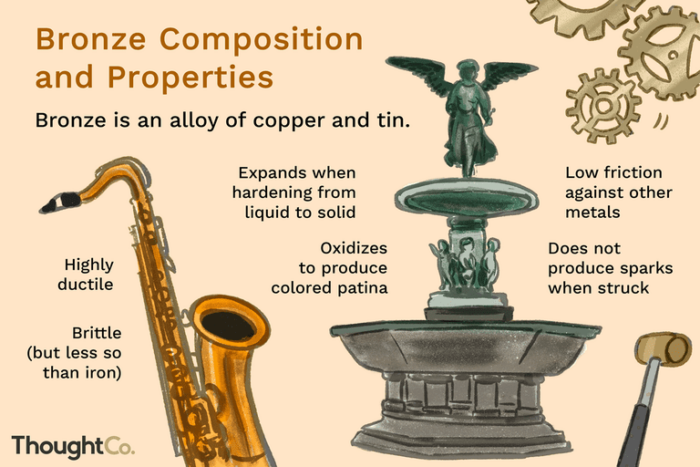
Both hardness and brightness are reflected in the many biblical references to bronze.

Bronze was later replaced by brass; therefore, most of the references to bronze in the Bible (159 of the 163 occurrences in the NET Bible) are located in the Old Covenant. (3)

Brass is the alloy of copper and zinc, a combination unknown in the ancient Near East. However, some modern translations retain brass where hardness or persistence in sin is in view (Leviticus 26:19; Deuteronomy 28:23; Isaiah 48:4), but they use “bronze” as a translation elsewhere. (4)
“Although, at one time, bronze was an alloy consisting of copper with tin and brass was an alloy of copper with zinc, modern usage has blurred the lines between brass and bronze. Now, copper alloys generally are called brass, with bronze sometimes considered a type of brass. To avoid confusion, museums and historical texts typically use the inclusive term “copper alloy.” In science and engineering, bronze and brass are defined according to their element composition.” (5)
The patriarchal period of ancient Israel occurs in what modern historians have called the Bronze Age, and the time of the settlement of Canaan marks the change from the Bronze Age to the Iron Age. (4)
The Lord was with the men of Judah. They conquered the hill country, but they could not conquer the people living in the coastal plain, because they had chariots with iron-rimmed wheels. (Judges 1:19 NET)
The Israelites cried out for help to the Lord, because Sisera had nine hundred chariots with iron-rimmed wheels, and he cruelly oppressed the Israelites for twenty years. (Judges 4:3 NET)
Bronze in the Tabernacle of Moses
The Lord spoke to Moses: “Tell the Israelites to take an offering for me; from every person motivated by a willing heart you are to receive my offering. This is the offering you are to accept from them: gold, silver, bronze, blue, purple, scarlet, fine linen, goat’s hair, ram skins dyed red, fine leather, acacia wood, oil for the light, spices for the anointing oil and for fragrant incense, onyx stones, and other gems to be set in the ephod and in the breastpiece. Let them make for me a sanctuary, so that I may live among them. According to all that I am showing you—the pattern of the tabernacle and the pattern of all its furnishings—you must make it exactly so. (Exodus 25:1–9 NET)
Nearly half of all the references to bronze refer to its use in the temple or tabernacle. From the Brazen Altar (1) to the Bronze Laver (1), to bowls, cups, fence posts, columns, and frying pans, bronze was the metal of choice for implements and structures. This sturdy and easily worked metal was used throughout the Israelites’ worship space. (3)

Bronze in Soloman’s Temple
King Solomon sent for Hiram of Tyre. He was the son of a widow from the tribe of Naphtali, and his father was a craftsman in bronze from Tyre. He had the skill and knowledge to make all kinds of works of bronze. He reported to King Solomon and did all the work he was assigned... He made the two pillars, the two bowl-shaped tops of the pillars, the latticework for the bowl-shaped tops of the two pillars, the four hundred pomegranate-shaped ornaments for the latticework of the two pillars (each latticework had two rows of these ornaments at the bowl-shaped top of the pillar), the ten movable stands with their ten basins, the big bronze basin called “The Sea” with its twelve bulls underneath, and the pots, shovels, and bowls. All these items King Solomon assigned Hiram to make for the Lord’s temple were made from polished bronze. The king had them cast in earth foundries in the region of the Jordan between Succoth and Zarethan. Solomon left all these items unweighed; there were so many of them they did not weigh the bronze. (1 Kings 7:13,14;7:40–47).
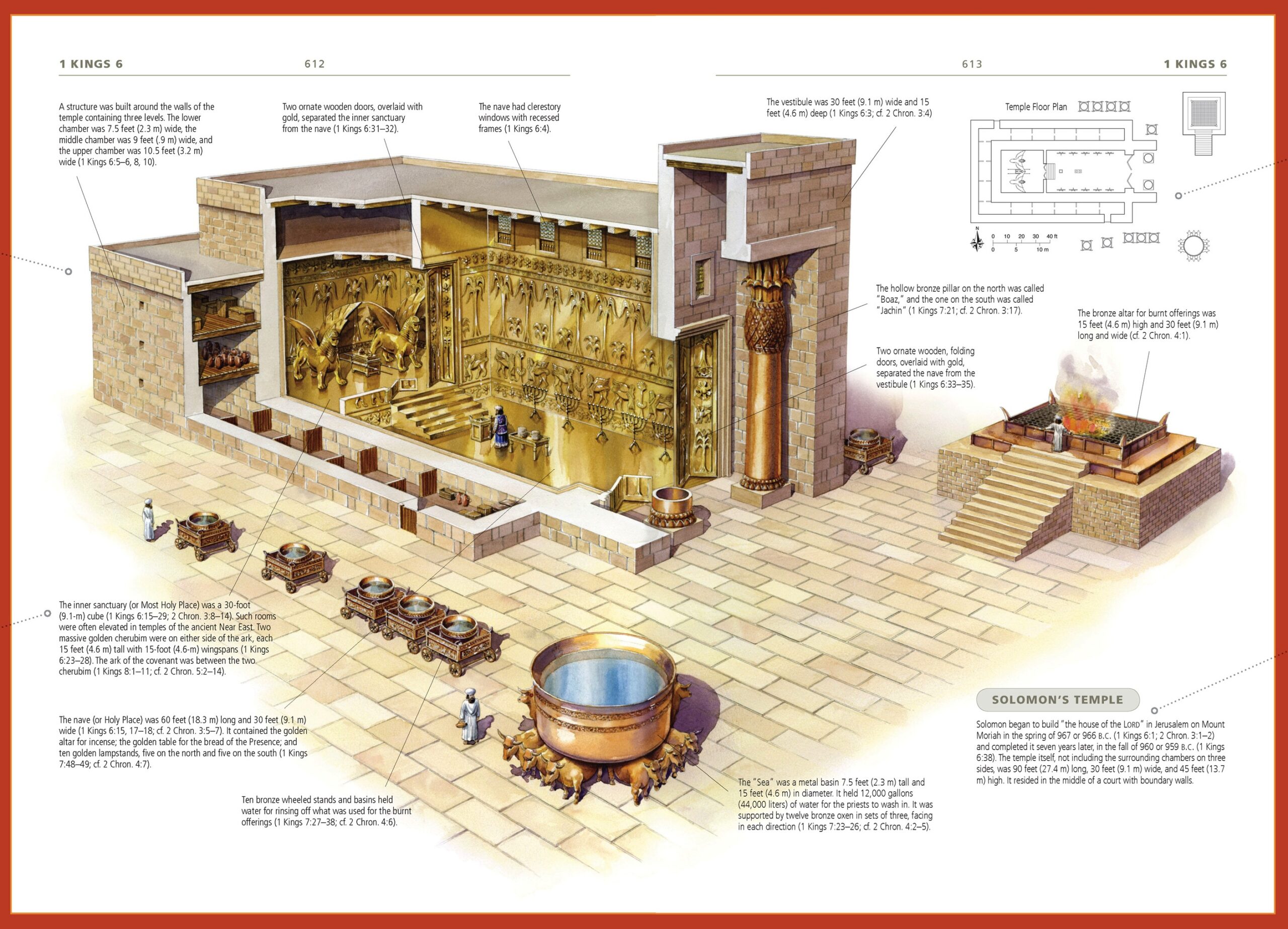
Bronze that has been Burnished (Polished) represents Radiance
Polished and shiny, bronze was used for mirrors (1) in the ancient world and is associated with shining and radiance.
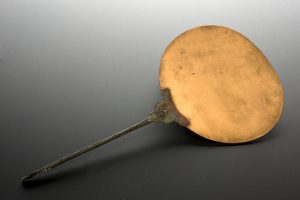
Daniel’s heavenly being had arms and feet that gleamed like polished bronze:
On the twenty-fourth day of the first month I was beside the great river, the Tigris. I looked up and saw a man clothed in linen; around his waist was a belt made of gold from Upaz. His body resembled yellow jasper, and his face had an appearance like lightning. His eyes were like blazing torches; his arms and feet had the gleam of polished bronze. His voice thundered forth like the sound of a large crowd. (Daniel 10:4–6 NET)
Ezekiel’s heavenly creatures had legs that “gleamed liked burnished bronze”:
As I watched, I noticed a windstorm coming from the north—an enormous cloud, with lightning flashing, such that bright light rimmed it and came from it like glowing amber from the middle of a fire. In the fire were what looked like four living beings. In their appearance they had human form, but each had four faces and four wings. Their legs were straight, but the soles of their feet were like calves’ feet. They gleamed like polished bronze. They had human hands under their wings on their four sides. As for the faces and wings of the four of them, their wings touched each other; they did not turn as they moved, but went straight ahead. Their faces had this appearance: Each of the four had the face of a man, with the face of a lion on the right, the face of an ox on the left and also the face of an eagle. Their wings were spread out above them; each had two wings touching the wings of one of the other beings on either side and two wings covering their bodies. Each moved straight ahead—wherever the spirit would go, they would go, without turning as they went. In the middle of the living beings was something like burning coals of fire or like torches. It moved back and forth among the living beings. It was bright, and lightning was flashing out of the fire. The living beings moved backward and forward as quickly as flashes of lightning. (Ezekiel 1:4–14 NET)
Later Ezekiel encountered a man whose appearance was like bronze: (Ezek 40:3). (3)
In the twenty-fifth year of our exile, at the beginning of the year, on the tenth day of the month, in the fourteenth year after the city was struck down, on this very day, the hand of the LORD was on me, and he brought me there. By means of divine visions he brought me to the land of Israel and placed me on a very high mountain, and on it was a structure like a city, to the south. When he brought me there, I saw a man whose appearance was like bronze, with a linen cord and a measuring stick in his hand. He was standing in the gateway. The man said to me, “Son of man, watch closely, listen carefully, and pay attention to everything I show you, for you have been brought here so that I can show it to you. Tell the house of Israel everything you see.” (Ezekiel 40:1–4 NET)
Bronze associated with radiance is found in Revelation (1):
I turned to see whose voice was speaking to me, and when I did so, I saw seven golden lampstands, and in the midst of the lampstands was one like a son of man. He was dressed in a robe extending down to his feet and he wore a wide golden belt around his chest. His head and hair were as white as wool, even as white as snow, and his eyes were like a fiery flame. His feet were like polished bronze refined in a furnace, and his voice was like the roar of many waters. (Revelation 1:12–15 NET)
Bronze represents Strength
The use of bronze as a figure of speech is concentrated in the Old Covenant poetry and prophets (two-thirds of the uses in these books are figurative) and the book of Revelation. When used figuratively, bronze often connotes strength, as seen in Job’s questions:
Is my strength like that of stones? or is my flesh made of bronze? (Job 6:12 NET)
Also when describing Leviathan, who cannot be fettered, it is said that:
It regards iron as straw and bronze as rotten wood. (Job 41:27 NET)
In Jeremiah’s call to serve, God said:
I, the Lord, hereby promise to make you as strong as a fortified city, an iron pillar, and a bronze wall. You will be able to stand up against all who live in the land, including the kings of Judah, its officials, its priests and all the people of the land. They will attack you but they will not be able to overcome you, for I will be with you to rescue you,” says the Lord. (Jeremiah 1:18–19 NET)
Bronze represents Bondage and Captivity
Very evocative use of bronze is its association with bondage and captivity. Bronze shackles symbolize the treatment of fallen leaders by victorious adversaries. Two famous examples are:
Samson,
When Delilah saw that he had told her his secret, she sent for the rulers of the Philistines, saying, “Come up here again, for he has told me his secret.” So the rulers of the Philistines went up to visit her, bringing the silver in their hands. She made him go to sleep on her lap and then called a man in to shave off the seven braids of his hair. She made him vulnerable and his strength left him. She said, “The Philistines are here, Samson!” He woke up and thought, “I will do as I did before and shake myself free.” But he did not realize that the LORD had left him. The Philistines captured him and gouged out his eyes. They brought him down to Gaza and bound him in bronze chains. He became a grinder in the prison. His hair began to grow back after it had been shaved off. (Judges 16:18–22 NET)
and Zedekiah the last king of ancient Judah. (3)
The Chaldean army pursued the king and overtook Zedekiah in the plains of Jericho. Zedekiah’s entire army left him and scattered. The Chaldeans seized the king and brought him to the king of Babylon at Riblah in the land of Hamath, and he passed sentence on him. At Riblah the king of Babylon slaughtered Zedekiah’s sons before his eyes, and he also slaughtered the Judean commanders. Then he blinded Zedekiah and bound him with bronze chains. The king of Babylon brought Zedekiah to Babylon, where he kept him in custody until his dying day. (Jeremiah 52:8–11 CSB)
Bronze represents Booty and Weaponry in Warfare
Another sizable group of bronze references is to bronze in warfare. Here bronze is used to describe booty: (2)
So the young spies went and brought out Rahab, her father, mother, brothers, and all who belonged to her. They brought out her whole family and took them to a place outside the Israelite camp. But they burned the city and all that was in it, except for the silver, gold, and bronze and iron items they put in the treasury of the Lord’s house. Yet Joshua spared Rahab the prostitute, her father’s family, and all who belonged to her. She lives in Israel to this very day because she hid the messengers Joshua sent to spy on Jericho. (Joshua 6:23–25 NET)
(Now to one half-tribe of Manasseh, Moses had assigned land in Bashan; and to the other half Joshua had assigned land on the west side of the Jordan with their fellow Israelites.) When Joshua sent them home, he rewarded them, saying, “Take home great wealth, a lot of cattle, silver, gold, bronze, iron, and a lot of clothing. Divide up the goods captured from your enemies with your brothers.” (Joshua 22:7–8 NET)
Here bronze is used to describe Goliath’s armor and weapon: (2)
He had a bronze helmet on his head and was wearing scale body armor. The weight of his bronze body armor was five thousand shekels. He had bronze shin guards on his legs, and a bronze javelin was slung over his shoulders. The shaft of his spear was like a weaver’s beam, and the iron point of his spear weighed six hundred shekels. His shield bearer was walking before him. (1 Samuel 17:5–7 NET)
Bronze represents God’s Judgment for Sin
Hard and smooth, in judgment, the ground will be made infertile:
“ ‘If, in spite of all these things, you do not obey me, I will discipline you seven times more on account of your sins.I will break your strong pride and make your sky like iron and your land like bronze. Your strength will be used up in vain, your land will not give its yield, and the trees of the land will not produce their fruit. (Leviticus 26:18–20 NET)
Your prayers will appear to not penetrate the bronze sky to reach Heaven:
“But if you ignore the Lord your God and are not careful to keep all his commandments and statutes I am giving you today, then all these curses will come upon you in full force: You will be cursed in the city and cursed in the field. Your basket and your mixing bowl will be cursed. Your children will be cursed, as well as the produce of your soil, the calves of your herds, and the lambs of your flocks. You will be cursed when you come in and cursed when you go out. “The Lord will send on you a curse, confusing you and opposing you in everything you undertake until you are destroyed and quickly perish because of the evil of your deeds, in that you have forsaken me. The Lord will plague you with deadly diseases until he has completely removed you from the land you are about to possess. He will afflict you with weakness, fever, inflammation, infection, sword, blight, and mildew; these will attack you until you perish. The sky above your heads will be bronze and the earth beneath you iron. The Lord will make the rain of your land powder and dust; it will come down on you from the sky until you are destroyed. (Deuteronomy 28:15–24 NET)
The Overarching Typological Meaning of Bronze
In the Bible, bronze is a symbol of God’s righteous judgment due as a result of sin. The altar where sacrifices were made at the Tabernacle, a type of the cross of Jesus the Messiah, was made of bronze. John sees the Son of Man with feet of fine bronze that have been refined in a furnace. That is, Jesus has passed through judgment for our sin (1), but He had no sin (1) as indicated by the refined (i.e., containing no impurities) polished bronze. Therefore He can administer a pure, righteous judgment.
His feet were like polished bronze refined in a furnace, and his voice was like the roar of many waters. (Revelation 1:15 NET)
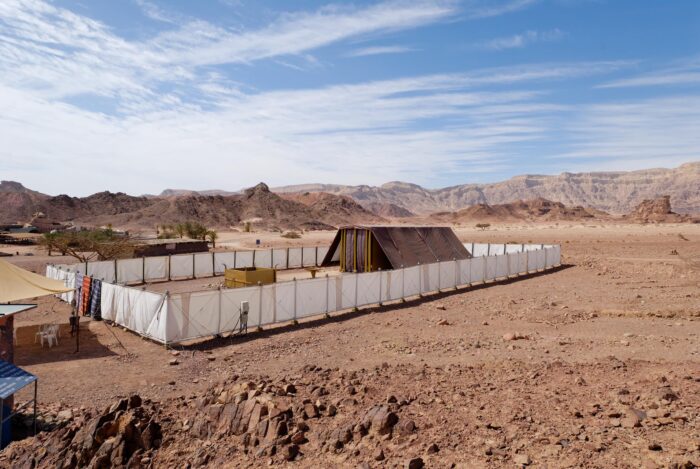
Approaching the outer court of the Tabernacle of Moses, one would see the bright white linen (1) symbolically representing God’s high standard of purity or righteousness (Revelation 19:8) and would be convicted of sin (Romans 3:23). The outer fence of the Tabernacle had bronze posts (representing God’s judgment due because of our sin) placed on top of the soil (representing all humanity, Genesis 2:7). The silver (1) on the top of the posts represents there is a “price on our head” for redemption that must be paid (Numbers 18:16. Exodus 30:16) to make us righteous (Romans 3:24-26). Our ability to become righteous once this price is paid by the blood of Jesus (1) (symbolically represented by the silver hooks supporting the white linen) and able to escape the fiery judgment that we deserve (symbolically represented by the bronze post and base Numbers 21:8,9). That is, the message of sin, righteousness, and judgment is conveyed to anyone approaching the Outer Court via the materials and construction of the Outer Court’s fence or wall (John 16:8-11). The wall’s message – which represents the law – you must be perfect for entering the Tabernacle Complex and approaching a Holy God! The only way to become perfectly righteous is to accept Jesus as Lord and Savior (1)

On the borders of Edom, Israel suffered deadly snakebites as a punishment for rebellion and begged Moses to intercede with God for them, to save them from the serpents. God then commanded Moses to make a bronze figure of a serpent and set it up on a pole, so that anyone bitten by a serpent need only look at the bronze serpent figure and he would live.
Then they traveled from Mount Hor by the road to the Red Sea, to go around the land of Edom, but the people became impatient along the way. And the people spoke against God and against Moses, “Why have you brought us up out of Egypt to die in the wilderness, for there is no bread or water, and we detest this worthless food.” So the Lord sent poisonous snakes among the people, and they bit the people; many people of Israel died. Then the people came to Moses and said, “We have sinned, for we have spoken against the Lord and against you. Pray to the Lord that he would take away the snakes from us.” So Moses prayed for the people. The Lord said to Moses, “Make a poisonous snake and set it on a pole. When anyone who is bitten looks at it, he will live.” So Moses made a bronze snake and put it on a pole, so that if a snake had bitten someone, when he looked at the bronze snake he lived. (Numbers 21:4–9 NET)
And let us not put Christ to the test, as some of them did, and were destroyed by snakes. And do not complain, as some of them did, and were killed by the destroying angel. These things happened to them as examples and were written for our instruction, on whom the ends of the ages have come. So let the one who thinks he is standing be careful that he does not fall. No trial has overtaken you that is not faced by others. And God is faithful: He will not let you be tried beyond what you are able to bear, but with the trial will also provide a way out so that you may be able to endure it. (1 Corinthians 10:9–13 NET)
By this means, God granted the people deliverance and enforced the lesson of dependence upon himself both for that deliverance and as a general principle. However, centuries later King Hezekiah of Judah, during his purge of idolatrous objects and customs, destroyed the bronze serpent because the people had turned it into an idol, burning incense to it. (10)
In the third year of the reign of Israel’s King Hoshea son of Elah, Ahaz’s son Hezekiah became king over Judah. He was twenty-five years old when he began to reign, and he reigned twenty-nine years in Jerusalem. His mother was Abi, the daughter of Zechariah. He did what the Lord approved, just as his ancestor David had done. He eliminated the high places, smashed the sacred pillars to bits, and cut down the Asherah pole. He also demolished the bronze serpent that Moses had made, for up to that time the Israelites had been offering incense to it; it was called Nehushtan. He trusted in the Lord God of Israel; in this regard there was none like him among the kings of Judah either before or after. He was loyal to the Lord and did not abandon him. He obeyed the commandments which the Lord had given to Moses. The Lord was with him; he succeeded in all his endeavors. He rebelled against the king of Assyria and refused to submit to him. (2 Kings 18:1–7 NET)
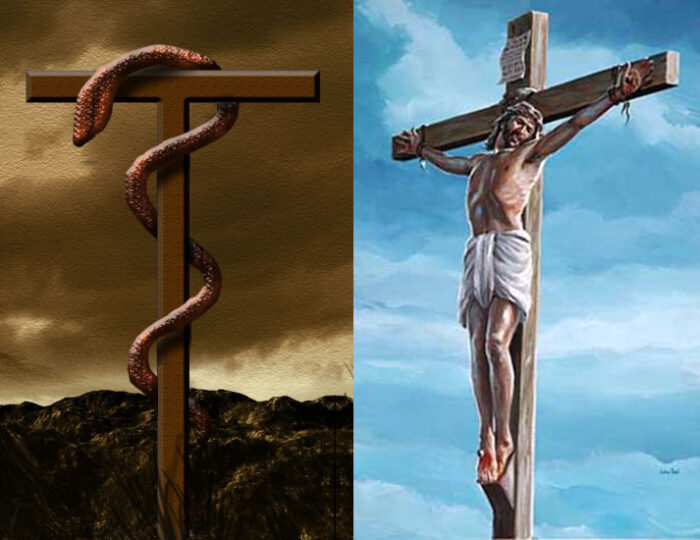
When speaking of his coming crucifixion, Jesus Christ used the incident of the serpent, which was lifted up that man might look in faith and live, in order to illustrate the significance of that impending event. Those who put faith in him, uplifted on the cross for their sins, would have life eternal. (10)
Just as Moses lifted up the serpent in the wilderness, so must the Son of Man be lifted up, so that everyone who believes in him may have eternal life.” For this is the way God loved the world: He gave his one and only Son, so that everyone who believes in him will not perish but have eternal life. For God did not send his Son into the world to condemn the world, but that the world should be saved through him. The one who believes in him is not condemned. The one who does not believe has been condemned already, because he has not believed in the name of the one and only Son of God. Now this is the basis for judging: that the light has come into the world and people loved the darkness rather than the light, because their deeds were evil. For everyone who does evil deeds hates the light and does not come to the light, so that their deeds will not be exposed. But the one who practices the truth comes to the light, so that it may be plainly evident that his deeds have been done in God. (John 3:14–21 NET)
While on the cross, Satan unleashes the fullness of his evil demons and fallen angels (Psalms 22:12,13,16,20,21), the fullness of sin, and its consequences upon Jesus. He who has never sinned takes the judgment (i.e., the bronze) for our sin (Isaiah 53:6). That is, Jesus who never had before experienced sin, becomes one with our sin (2 Corinthians 5:21) and in a manner of speaking – the lamb becomes a serpent so that we serpents (Matthew 3:7. Luke 3:7. Matthew 12:34. Matthew 23:33. John 8:44) can become His lambs (1) (Psalms 100:3. John 21:15). That is so that all who will look to His bearing away our sin will be saved (John 1:29. Numbers 21:9. John 3:14,15. 1 Peter 2:24. Hebrews 9:26-28).
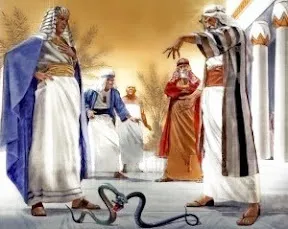
Recall the staff of Moses becoming a serpent and then swallowing up the serpents of the Egyptian magicians as a parallel typology. (Exodus 7:10-13)
Biblical Typologies, Metaphors, & Similes Series:
- The Old Leaven of the Kingdom of Darkness
- The New Leaven of the Kingdom of Heaven
- Wine
- Water
- Finely Sifted (Wheat) Flour
- Frankincense
- Myrrh
- Anointing Oil
- Olive Oil
- Honey
- Salt
- Waving and Heaving
- Barley
- Gold
- Silver
- Bronze
- Stone
- Wood
- Linen
- Iron
- Shofar and Trumpet
Shalom
(Security, Wholeness, Success)
Peace
Then he said to them, “Therefore every expert in the law who has been trained for the kingdom of heaven is like the owner of a house who brings out of his treasure what is new and old.” (Matthew 13:52 NET)
(1) Select the link to open another article with additional information in a new tab.
(2) Rattray, S. (2011). bronze. In M. A. Powell (Ed.), The HarperCollins Bible Dictionary (Revised and Updated) (Third Edition, p. 106). HarperCollins.
(3) Ryken, L., Wilhoit, J., Longman, T., Duriez, C., Penney, D., & Reid, D. G. (2000). In Dictionary of biblical imagery (electronic ed., p. 124). InterVarsity Press.
(4) Brass. (2003). In C. Brand, C. Draper, A. England, S. Bond, E. R. Clendenen, & T. C. Butler (Eds.), Holman Illustrated Bible Dictionary (p. 235). Holman Bible Publishers.
(5) Helmenstine, Anne Marie, Ph.D. (2020, August 25). Composition and Properties of Bronze. Retrieved from https://www.thoughtco.com/bronze-composition-and-properties-603730
(6) Freedman, D. N., Myers, A. C., & Beck, A. B. (2000). Tubal-Cain. In D. N. Freedman, A. C. Myers, & A. B. Beck (Eds.), Eerdmans dictionary of the Bible (p. 1340). W.B. Eerdmans.
(7) Losch, R. R. (2008). In All the People in the Bible: An A–Z Guide to the Saints, Scoundrels, and Other Characters in Scripture (p. 428). William B. Eerdmans Publishing Company.
(8) Smith. (1882). La′mech. In Cyclopædia of Biblical, Theological, and Ecclesiastical Literature (Vol. 5, p. 209). Harper & Brothers, Publishers.
The fifth in descent from Cain, being the son of Methusael, and father of Jabal, Jubal, Tubal-cain, and Naamah (Gen. 4:18–24). B.C. cir. 3776. He is recorded to have taken two wives, Adah and Zillah; and there appears no reason why the fact should have been mentioned, unless to point him out as the author of the evil practice of polygamy. The manner in which the sons of Lamech distinguished themselves as the inventors of useful arts is mentioned under their several names (q. v.). The Targum of Jonathan (ad loc.) adds, that his daughter was “the mistress of sounds and songs,” i.e. the first poetess; which Jewish tradition embellishes by saying that all the world wondered after her, even the sons of God, and that evil spirits were born of her (Midrash on Ruth, and Zohar). Josephus (Ant. i, 2, 2) relates that the number of Lamech’s sons was seventy-seven, and Jerome records the same tradition, adding that they were all cut off by the Deluge, and that this was the seventy-and-sevenfold vengeance which Lamech imprecated.
The most remarkable circumstance in connection with Lamech is the poetical address which he is very abruptly introduced as making to his wives, being, indeed, the only example of antediluvian poetry extant (Gen. 4:23, 24):
Adah and Zillah, hear my voice;
Wives of Lamech, listen to my say!
For a man I slew for my wound,
Even a youth for my bruise:
If sevenfold Cain was to be avenged,
Then Lamech seventy and seven.
(9) Smith. (1882). La′mech. In Cyclopædia of Biblical, Theological, and Ecclesiastical Literature (Vol. 5, p. 210). Harper & Brothers, Publishers.
The seventh in descent from Seth, being the son of Methuselah, and father of several sons, of whom apparently the oldest was Noah (Genesis 5:25–31; 1 Chronicles 1:3; Luke 3:36). B.C. 3297–2520. He was 182 years old at the birth of Noah, and survived that event 595 years, making his total age 707.
(10) Kitchen, K. A. (1996). Serpent, Bronze. In D. R. W. Wood, I. H. Marshall, A. R. Millard, J. I. Packer, & D. J. Wiseman (Eds.), New Bible dictionary (3rd ed., p. 1081). InterVarsity Press.



